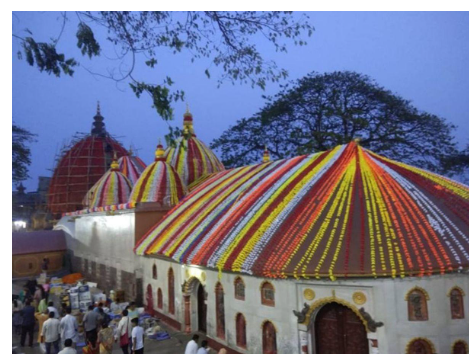Wednesday, 14th February 2024
Daily News Paper Snippets - 14th February 2024

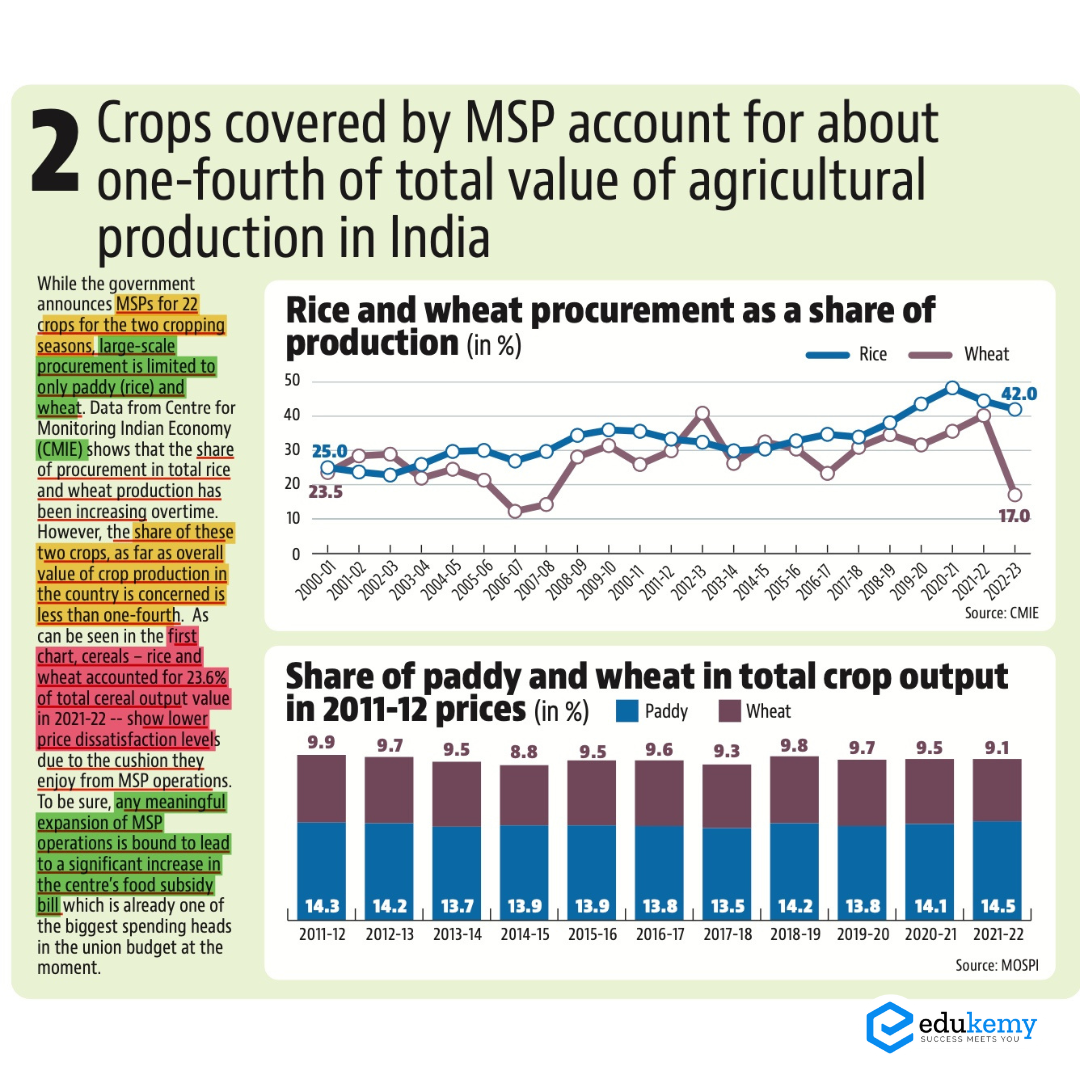
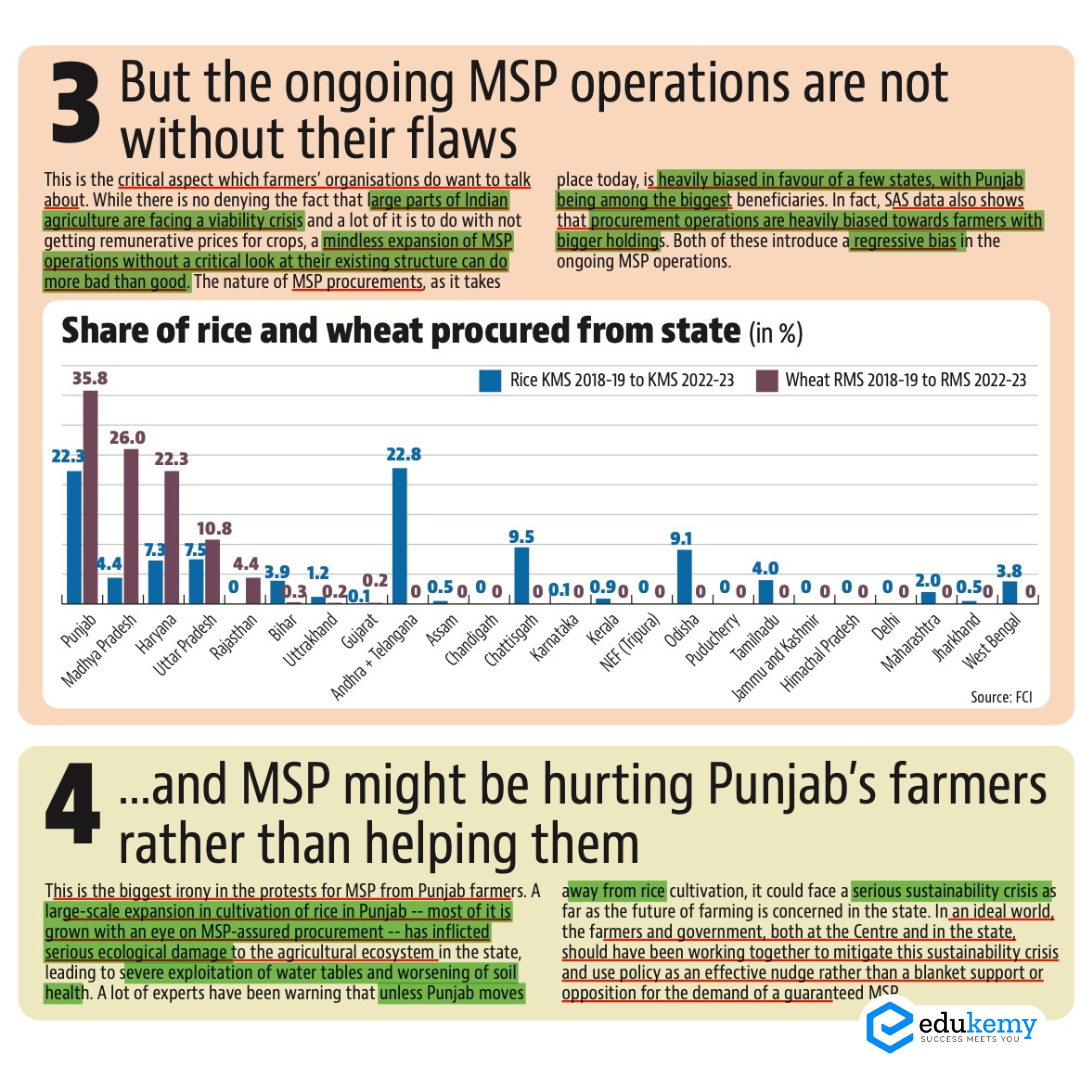

Performance of Information Commissions in India 2022-23
In News: A recent report, titled "Report Card on the Performance of Information Commissions (ICs) has unveiled concerning statistics across India.

Key Highlights of the Report
Gender Disparity in Information Commissions
- Representation of Women
- A significant gender gap is evident, with only 9% of Information Commissioners nationwide being women.
- Leadership Roles
- Merely 5% of Information Commissions have been led by women, and currently, no female commissioner heads any commission.
States Without Female Commissioners
- Twelve Information Commissions, constituting around 41%, have never had a female commissioner.
- These states include Andhra Pradesh, Bihar, Chhattisgarh, Himachal Pradesh, Madhya Pradesh, Manipur, Meghalaya, Mizoram, Sikkim, Telangana, Uttarakhand, and West Bengal.
Background of Information Commissioners
- Retired Government Officials
- Approximately 58% of Information Commissioners surveyed have a background as retired government officials.
- Legal Professionals
- Legal professionals, including lawyers or former judges, make up about 14% of Information Commissioners, contributing to the diversity of backgrounds.
Functioning of Information Commissions
- Case Disposal Rates
- Some Information Commissions return a significant number of cases without issuing orders, with the Central Information Commission and some State Information Commissions returning 41% of appeals or complaints.
- Low Disposal Rates
- Despite a high number of pending cases, some commissions exhibit low disposal rates per commissioner, indicating potential inefficiencies in case management.
- Vacancies and Appointments
- Timely and transparent appointments are lacking, leading to reduced capacity and chiefless Commissions.
Defunct Commissions
- The State Information Commissions of Jharkhand, Telangana, and Tripura are defunct due to the absence of new appointments, impacting their effectiveness.
Transparency Issues
- The functioning of Information Commissions is largely opaque, with only 8 out of 29 stating that their hearings are open to the public, raising transparency concerns.
Way Forward
- Ensure fair, transparent, and inclusive selection processes for commissioners, prioritizing representation for women and marginalized groups.
- Provide adequate resources and infrastructure to enhance case disposal rates and efficiency in line with RTI Act and Supreme Court norms.
- Address timely and transparent appointments, advertise vacancies widely, and revive defunct commissions to fill vacancies and ensure each IC is led by a chief commissioner.
- Enhance transparency and accountability through the publication of annual reports, disclosure of budgets and expenditures, and making hearings open for public attendance.
|
UPSC Previous Year Questions Mains (2018) Q. The Right to Information Act is not all about citizens’ empowerment alone, it essentially redefines the concept of accountability.” Discuss. |
Source: TH
Water (Prevention and Control of Pollution) Amendment Bill, 2024
In News: GS – 2 Government Policies & Interventions GS- 3 Conservation Environmental Pollution & Degradation, Statutory Bodies
Major Provisions of the Water (Prevention and Control of Pollution) Amendment Bill, 2024
Introduction
- The Water (Prevention and Control of Pollution) Act, 1974, a cornerstone of India's environmental legislation, is undergoing amendments to address shortcomings and align with contemporary needs.
Amended Provisions
- Decriminalisation of Minor Offences
- Focuses on decriminalising minor water pollution offences, aiming to prevent imprisonment for technical or procedural lapses.
- Seeks to align penalties with the severity of offences, promoting compliance without imposing excessive burdens.
- Exemption for Certain Industrial Plants
- Empowers the central government to exempt specific industrial plant categories from statutory restrictions, reducing duplication of surveillance efforts.
- Aims to streamline regulatory processes, enhance efficiency, and alleviate unnecessary burdens on regulatory agencies.
- Enhanced Regulatory Oversight
- Introduces measures to standardise regulatory oversight across states.
- Grants the central government authority to prescribe guidelines for State Pollution Control Board chairpersons and issue directives on industry-related consents.
- Ensures fair chairperson appointments through mandatory qualifications, experience, and procedures.
Critiques
- Critics argue against centralizing powers, citing concerns about federalism principles.
- Express concerns about potential impacts on transparency in dealing with water pollution issues.
- Fear that relaxing regulations may compromise industry and regulatory accountability, reducing transparency in environmental management.
Salient Features of Water (Prevention and Control of Pollution) Act, 1974
- Introduction
- Enacted for the prevention and control of water pollution, maintaining or restoring water wholesomeness.
- Central and State Pollution Control Boards
- Constituted under Sections 3 and 4 of the Act.
- CPCB, a statutory organization, established in 1974, functions under the Ministry of Environment, Forest and Climate Change.
- Previous Amendments
- Amended in 1978 and 1988 to clarify ambiguities and empower Pollution Control Boards.
- Obligations on Industries and Local Bodies
- Prior consent required from State Pollution Control Boards for establishing any industry or local body discharging sewage or effluent.
- State Boards may grant consent with specific conditions or refuse with reasons in writing.
- Similar provisions apply to industries discharging waste before the Act enactment.
|
UPSC Previous Year Questions Prelims (2018) Q. How is the National Green Tribunal (NGT) different from the Central Pollution Control Board (CPCB)?
Which of the statements given above is/are correct? (a) 1 only Ans: (b) |
Source: IE
Rising Human-Animal Conflict
In News: Wayanad is in turmoil following the tragic incident where a 47-year-old man was pursued and fatally trampled by a wild elephant.

Rising Human-Animal Conflict in Kerala
- Magnitude of the Issue
- The surge in human-animal conflict, particularly involving elephants, tigers, bison, and wild boars, has become a pressing concern in Kerala.
- Government data for 2022-23 highlights a significant increase in wild animal attacks, with elephants being the primary contributors.
- Statistics
- In 2022-23, there were 8,873 recorded wild animal attacks, leading to 98 reported deaths, with 27 attributed to elephant attacks.
- Kerala's agriculture sector has also suffered, with 20,957 incidents of crop loss from 2017 to 2023.
- Worst-Affected Region - Wayanad
- Wayanad, with a forest cover of 36.48%, has witnessed 41 deaths from elephant attacks and seven from tiger attacks in the last decade.
Reasons Behind the Conflict
- Decline in Quality of Forest Habitats
- Cultivation of alien plants like acacia, mangium, and eucalyptus for commercial purposes has led to habitat and food source depletion.
- Invasive species planted by the forest department have hindered the growth of natural vegetation.
- Changing Agri-practices
- Shifts in agricultural practices, including leaving farmland unattended, draw animals out of forests.
- Wildlife attacks on cultivated crops like bananas and pineapples have increased.
- Human Activities
- Waste disposal near forested areas, habitat fragmentation due to construction, and increased human presence contribute to the conflict.
Addressing the Issue in Kerala
- Preventive Measures
- Schemes for elephant-proof trenches, stone walls, and solar-powered electric fencing have been implemented.
- In 2022-23, maintenance and construction of elephant-proof trenches and solar fencing were undertaken.
- Eco-Restoration Programs
- Kerala is engaged in eco-restoration programs to keep animals within forests.
- The state is acquiring land from farmers for conversion into forestland.
- Challenges Persist
- Despite efforts, the measures are deemed insufficient to tackle the crisis comprehensively.
Elephant Corridors in India
- Definition
- Elephant corridors are essential natural habitat linkages allowing elephants and other wildlife to move without disturbance.
- Changing Numbers
- Initially, 88 corridors were identified in 2005, increasing to 101 in 2017, and currently totaling 150 as per the Elephant Corridors of India, 2023 Report.
- West Bengal leads with 26 corridors.
- Significance
- Critical for elephant movement and beneficial for other wildlife, including the Royal Bengal tiger.
Conclusion
- The rise in human-animal conflict in Kerala emphasizes the need for comprehensive strategies addressing habitat quality, agricultural practices, and human activities. The management of elephant corridors on a national scale is crucial for wildlife conservation.
Source: IE
Swami Dayanand Saraswati
In News: The Prime Minister of India recently spoke at an event commemorating the 200th birth anniversary of Swami Dayananda Saraswati.

About Swami Dayanand Saraswati
- Swami Dayanand Saraswati, originally named Mool Shankar Tiwari, was born on 12th February 1824 in Tankara, Gujarat.
- In his quest for truth, he spent fifteen years (1845-60) wandering as an ascetic.
- The DAV (Dayanand Anglo Vedic) schools were established in 1886, embodying Swami Dayanand Saraswati's vision.
- The formal inception of the first Arya Samaj Unit occurred in Mumbai in 1875, with the Samaj's headquarters later established in Lahore.
- Swami Dayanand Saraswati drew inspiration from the Vedas, considering them to be the unshakeable foundation and true original seed of Hinduism.
- He championed the slogan "Back to the Vedas," emphasizing a return to the fundamental teachings of the Vedas as the guiding principles for Hinduism.
Source: PIB
Brumation
In News: In recent findings, researchers have illuminated a survival strategy utilized by reptiles called brumation.

About Brumation
- Brumation, similar to hibernation in mammals, is a state of dormancy or reduced activity observed in reptiles.
- This phenomenon is a natural part of the reptile's cycle, typically occurring in colder months with limited food availability.
- Reptiles, categorized as cold-blooded vertebrates with backbones, possess dry skin covered with scales or bony plates and often lay soft-shelled eggs.
- The purpose of brumation in reptiles is to conserve energy and endure harsh conditions during periods of dropping temperatures and scarce food resources.
- This dormant state allows reptiles to survive until more favorable conditions emerge for feeding and reproduction.
- During brumation, reptiles seek sheltered areas such as burrows or rock crevices, where they slow their metabolism to endure extended periods without eating.
- Various reptilian species, including turtles, snakes, and lizards, have been observed entering brumation, each exhibiting unique behaviors to cope with adverse conditions.
- Researchers document and study these instances to gain insights into the specific adaptations and strategies employed by different reptile species during brumation.
Source: TH
Smart Food Grain Storage System (SAFEETY) technology
In News: The Ministry of Electronics and Information Technology (MeitY) has recently completed the successful technology transfer of the Smart Food Grain Storage System (SAFEETY) to M/s Paras Defense and Space Technology Ltd.
About SAFEETY Technology
- SAFEETY, developed by the Society for Applied Microwave Electronics Engineering and Research (SAMEER), an autonomous R&D institution under MeitY (Ministry of Electronics and Information Technology), features cutting-edge capabilities.
- The system incorporates conveyorized loading and unloading of grain bags, equipped with Radio Frequency Identification (RFID) for traceability.
- Notable features include online weight and moisture measurement, along with Radio Frequency Based Removal of Moisture from Grain.
- SAFEETY demonstrates impressive efficiency by handling nearly one truckload of grains (approximately 28 tons) in just 40 minutes.
- The technology transfer of SAFEETY aligns with the Innovation, Science, and Technology theme of Vikshit Bharat @2047, aspiring to position India as a global leader in digital transformation and innovation.
- The implementation of this technology is poised to contribute to the reduction of post-harvest losses, improvement of food quality and safety, and enhancement of food security across the country.
Source: ET
Bond Yield
In News: The recent statement from the Reserve Bank of India Governor suggests that as inflation continues to ease, bond yields will also decrease, leading to a reduction in borrowing costs.
About Bonds
- A bond is a fixed-income instrument signifying a loan from an investor to a borrower.
- The borrower is typically a corporation or government entity.
- In exchange for the loan, the investor receives regular interest payments.
- The duration between the bond's issuance and the agreed-upon repayment by the borrower is known as its 'term to maturity.'
- Bonds are utilized by issuers to raise funds for diverse purposes, including expansion projects, refinancing existing debt, and funding welfare activities.
About Bond Yield
- Bond yield represents the annual return anticipated by an investor until maturity.
- It is influenced by coupon payments, which are periodic interest earnings received by bondholders for holding the bonds.
- At the bond's maturity, bondholders receive its face value, but bonds can be bought at par value, discount (below par), or premium (above par) in the secondary market.
- The prevailing market price of bonds impacts the bond yield calculation.
- The formula for calculating bond yield is Bond Yield = Coupon Amount / Price.
- There is an inverse relationship between bond price and yield. When bond prices rise, yields fall, and vice versa.
- For example, if interest rates decrease, existing bonds become more valuable as they offer higher interest payments compared to new bonds with lower interest rates.
- However, the increased price of existing bonds makes them more expensive for new investors, causing the bond yield to decline due to the lower expected return on investment.
Source: Investopedia
Hastsal Minar
In News: In an age emphasizing the preservation of heritage, initiatives are underway to uncover the enigmas linked to the Hastsal Minar.
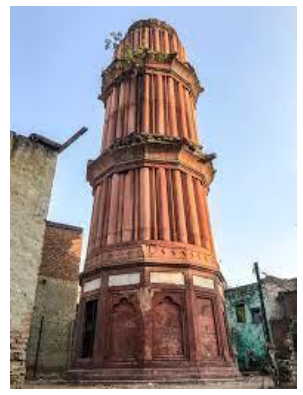
About Hastsal Minar
- Location: Hastsal Minar is situated in a small village in western Delhi.
- Construction Period: The construction of the minar was completed in 1634 during the reign of the Mughal emperor Shah Jahan.
- Alternative Names: It is also known as Mini Qutab Minar and referred to locally as Hastsal Ki Laat and Kaushal Minar.
- Architecture
- Constructed with lakhori bricks and clad with red sandstone.
- The minar stands 17 meters tall, with five storeys, positioned on a square platform, and has an octagonal body.
- The top features a domed Chhatri pavilion, accessible through a narrow staircase.
- The minar has three storeys, each with a decreasing diameter.
- Historical Use: Shah Jahan used Hastsal as one of his hunting lodges during the 17th century.
- Current Condition: In 2018, the minaret was recognized as Grade A in heritage value and received permission for conservation under Phase IV of the Delhi government’s project aimed at preserving lesser-known monuments in the capital.
Source: IE
Bor Tiger Reserve
In News: The Bor Tiger Reserve (BTR) has recently requested Rs 1 crore to initiate wildlife safaris in the Bangdapur and Hingni forest ranges.
About Bor Tiger Reserve
- Designation: Originally a wildlife sanctuary, Bor was declared a tiger reserve in July 2014.
- Location: Situated in the Wardha District of Maharashtra, Bor Tiger Reserve holds the distinction of being the smallest tiger reserve in India based on its area.
- Geographical Coverage: Encompassing an area of 138.12 sq.km, the reserve includes the drainage basin of the Bor Dam.
- Central Location: Positioned centrally among various Bengal Tiger habitats, it shares boundaries with Pench Tiger Reserve to the North-east, Nagzira Navegaon Tiger Reserve to the east, and Karhandla Wildlife Sanctuary to the South-east.
- Adjacent Reserves: Tadoba Andhari Tiger Reserve is located to the southeast, Melghat Tiger Reserve to the west, and Satpura Tiger Reserve to the north-west.
- Vegetation: The landscape is characterized by the Dry Deciduous Forest type.
- Flora: Teak, tendu, bamboo, tarot, and gokhru are among the diverse plant species thriving in the reserve.
- Fauna: In addition to tigers, Bor Tiger Reserve is inhabited by various other mammals, including leopards, sloth bears, sambar deer, Indian bison (gaur), chital, wild boars, and more.
Source: TOI
India-UAE Relations
In News: A recent article delves into the demonstration of significant alignment and reciprocal regard at various levels within India's strategic partnership agreements, with a particular focus on the one forged with the United Arab Emirates (UAE).
India’s Bilateral Relations with the UAE
- Historical Diplomatic Ties
- Diplomatic relations between India and the UAE were established in 1972.
- A significant turning point was the visit of India’s Prime Minister to the UAE in August 2015, initiating a new strategic partnership.
- The Crown Prince of Abu Dhabi's visit to India in January 2017 elevated bilateral relations to a comprehensive strategic partnership.
- Economic Partnership
- Bilateral trade reached USD 85 billion in 2022-23, with the UAE being India's third-largest trading partner and second-largest export destination.
- Goals include surpassing USD 100 billion in merchandise trade and achieving USD 15 billion in services trade within five years.
- The UAE ranks ninth as an investor in India, with an estimated investment of USD 11.67 billion.
- Cultural Ties
- Over 3.3 million Indians reside in the UAE, fostering cultural familiarity and receptiveness.
- India participated as the Guest of Honour Country in the Abu Dhabi International Book Fair 2019.
- Indian cinema, TV, and radio channels have a significant viewership in the UAE.
- Fintech Collaboration
- Active collaboration in the fintech sector, highlighted by the acceptance of the RuPay card in the UAE since August 2019.
- Operationalization of a Rupee-Dirham settlement system showcases mutual convergence in digital payment systems.
- Energy Security Cooperation
- The UAE plays a vital role in India's energy security, storing strategic oil reserves in India.
- Agreements, such as investment in the strategic crude oil storage facility in Mangaluru, emphasize the depth of cooperation in the energy sector.
- Strategic Regional Engagement
- Active participation in regional groupings and initiatives like I2U2 and the India-Middle East-Europe Economic Corridor (IMEC) demonstrates shared interests and strategic alignment.
Challenges in India-UAE Relations
- Trade Barriers Impacting Exports
- Non-Tariff Barriers (NTBs) such as mandatory Halal certification pose challenges to Indian exports, leading to a decline in certain sectors.
- Chinese Economic Influence
- China's economic influence, characterized by low-interest loans, has surpassed Indian endeavors in the UAE and the broader Middle East.
- Kafala System Challenges
- The Kafala system, giving employers significant power over immigrant laborers, raises human rights concerns and challenges for migrant workers.
- Concerns Over UAE's Financial Support to Pakistan
- Substantial financial aid from the UAE to Pakistan raises apprehensions about potential misuse and its impact on regional security dynamics.
- Diplomatic Balancing Act
- Ongoing conflicts in the Middle East, notably between Iran and Arab nations, pose diplomatic challenges for India in maintaining balanced relations.
Steps Required to Overcome Challenges
- Paving Way for Better GCC Relations
- Leverage the UAE's strong economic ties within the GCC to enhance India's strategic presence and access to the Africa market.
- Compliance to UAE’s NTBs
- Focus on transparency and predictability in addressing Non-Tariff Barriers to facilitate smoother trade relations.
- Exploring 2+2 Dialogues
- Initiate high-level 2+2 dialogues with the UAE to address strategic, defense, and political matters for enhanced bilateral understanding.
- Integrating With ‘Vision 21’ of UAE
- Collaborate with the UAE in emerging industries aligned with its 'Vision 2021,' fostering economic ties beyond traditional sectors.
- Addressing the Kafala System
- Diplomatically engage with the UAE to advocate for reforms in the Kafala labor system, enhancing the welfare of migrant workers.
Conclusion
- The forthcoming visit by the Prime Minister to the UAE reflects the deepening and multifaceted ties between the nations.
- The relationship encompasses robust economic partnerships, cultural exchange, and collaboration in key sectors, demonstrating a model of convergence and mutual respect poised for further strengthening.
|
UPSC Previous Year Questions Prelims (2016) Q. Which of the following is not a member of ‘Gulf Cooperation Council’? (a) Iran Ans: (a) Mains (2015) Q. Religious indoctrination via digital media has resulted in Indian youth joining the ISIS. What is ISIS and its mission? How can ISIS be dangerous to the internal security of our country? Mains (2017) Q. The question of India’s Energy Security constitutes the most important part of India’s economic progress. Analyse India’s energy policy cooperation with West Asian countries. |
Source: TH
"AMA SANKALPA: Initiative to Reduce Infant and Maternal Deaths"- Case Study of the Day
"Rayagada, a mineral-rich district in southern Odisha with a predominant tribal population of 57.52%, is addressing healthcare challenges through the 'Ama Sankalpa' initiative.
- Focused on reducing Infant Mortality Rate (IMR) and Maternal Mortality Rate (MMR), the district administration employs a bottom-up approach, leveraging Information, Education, and Communication (IEC) methods.
- 'Ama Sankalpa Ratha' Yatras, folk shows, and 126 Integrated Special VHND/RI sessions enhance health service accessibility, especially in hard-to-reach areas.
- The initiative includes 'Project Surjyamukhi' for early identification and referral of Severely Acute Malnourished (SAM) children, aiming to uplift the health standards of the tribal population."
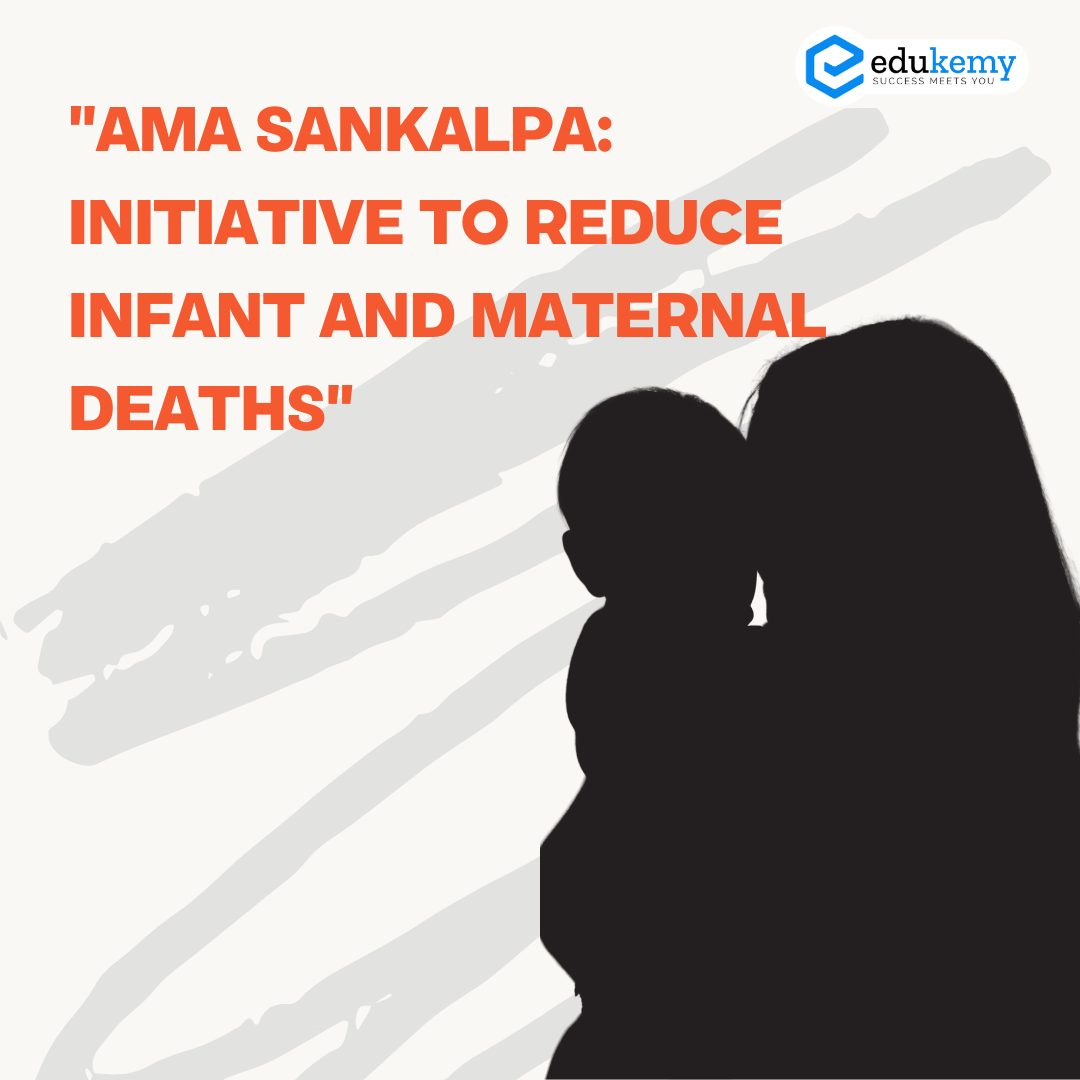
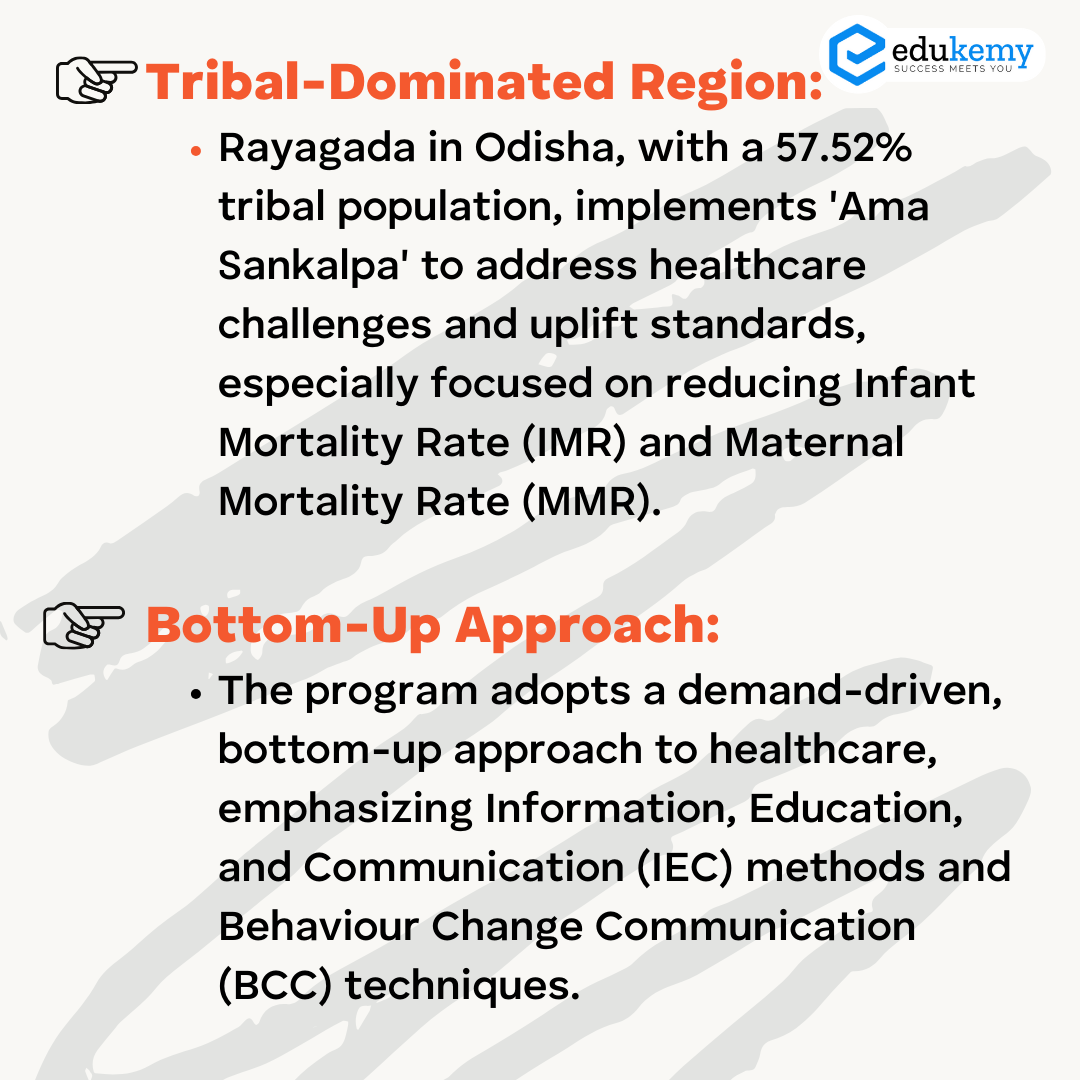
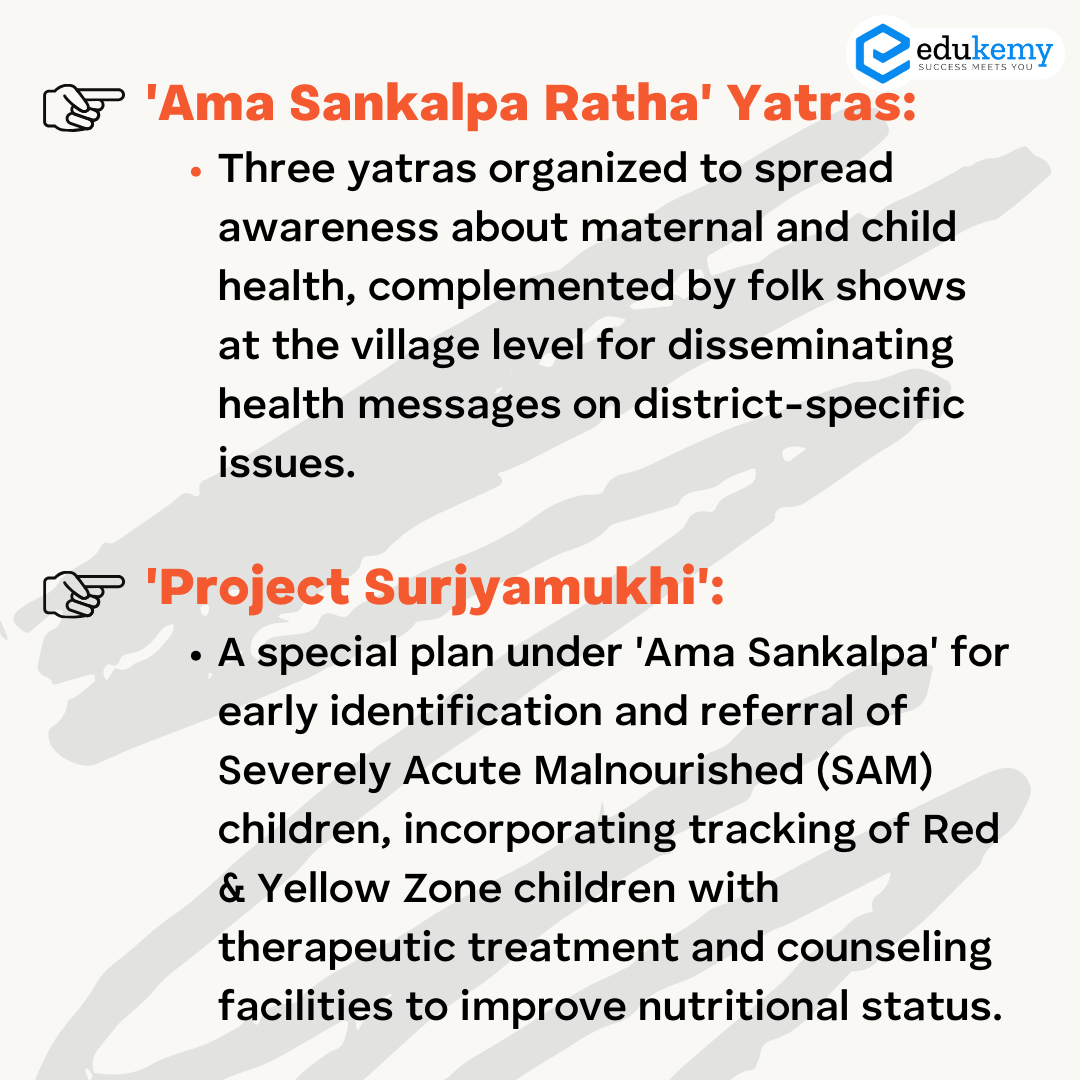
Share the article
Edukemy’s Current Affairs Quiz is published with multiple choice questions for UPSC exams
MCQ
Get Latest Updates on Offers, Event dates, and free Mentorship sessions.

Get in touch with our Expert Academic Counsellors 👋
FAQs
UPSC Daily Current Affairs focuses on learning current events on a daily basis. An aspirant needs to study regular and updated information about current events, news, and relevant topics that are important for UPSC aspirants. It covers national and international affairs, government policies, socio-economic issues, science and technology advancements, and more.
UPSC Daily Current Affairs provides aspirants with a concise and comprehensive overview of the latest happenings and developments across various fields. It helps aspirants stay updated with current affairs and provides them with valuable insights and analysis, which are essential for answering questions in the UPSC examinations. It enhances their knowledge, analytical skills, and ability to connect current affairs with the UPSC syllabus.
UPSC Daily Current Affairs covers a wide range of topics, including politics, economics, science and technology, environment, social issues, governance, international relations, and more. It offers news summaries, in-depth analyses, editorials, opinion pieces, and relevant study materials. It also provides practice questions and quizzes to help aspirants test their understanding of current affairs.
Edukemy's UPSC Daily Current Affairs can be accessed through:
- UPSC Daily Current Affairs can be accessed through Current Affairs tab at the top of the Main Page of Edukemy.
- Edukemy Mobile app: The Daily Current Affairs can also be access through Edukemy Mobile App.
- Social media: Follow Edukemy’s official social media accounts or pages that provide UPSC Daily Current Affairs updates, including Facebook, Twitter, or Telegram channels.




